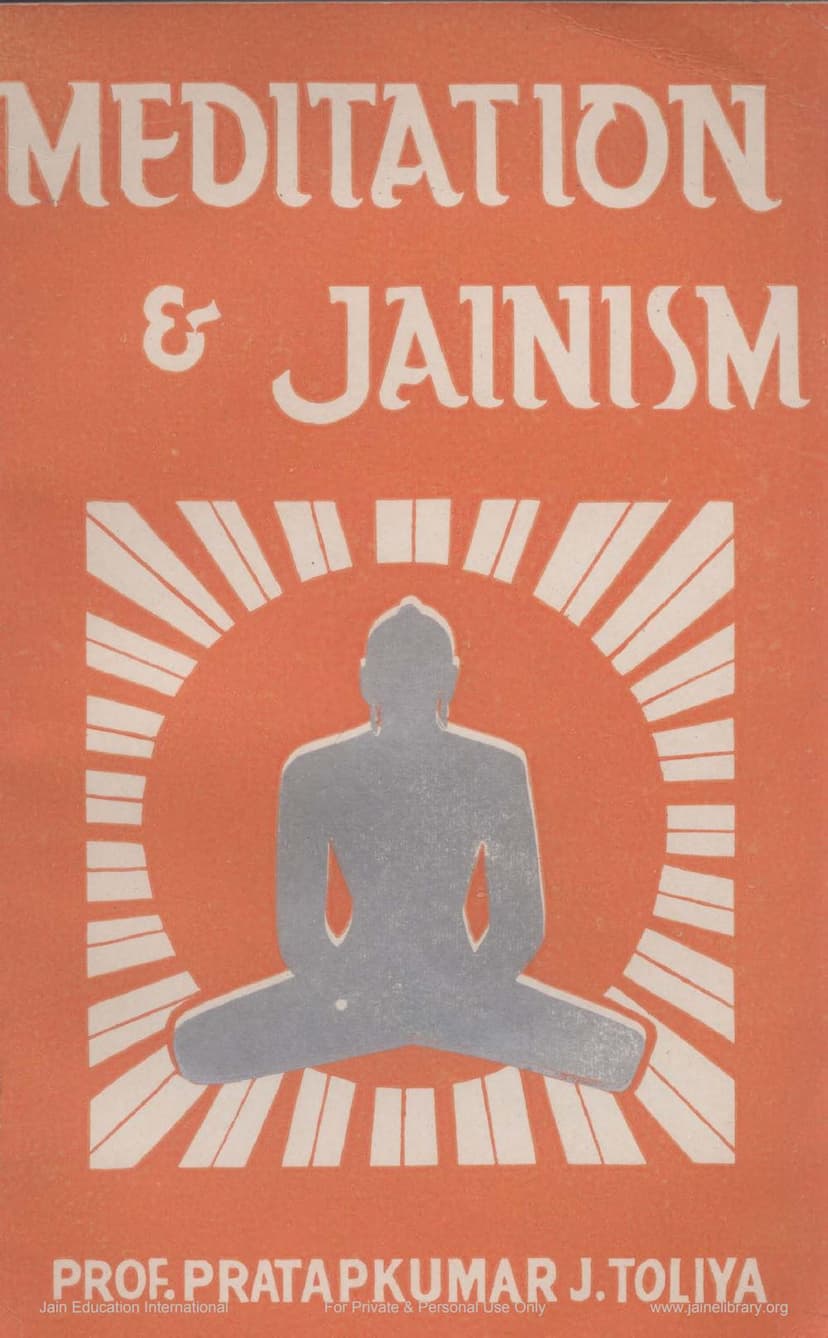Meditation And Jainism
Added to library: September 2, 2025

Summary
Here's a comprehensive summary of the provided Jain text, "Meditation & Jainism" by Prof. Pratapkumar J. Toliya:
Overview:
"Meditation & Jainism" is a deeply researched paper presented at an International Seminar on Buddhism and Jainism in 1976. Edited by the late Kum. Parul P. Toliya, it was published independently in 1986 by Vardhaman Bharti International Foundation. The book explores the profound connection between Jainism and meditation, arguing that meditation is the core and essence of the Jain path to self-realization and liberation.
Key Arguments and Themes:
-
Meditation as the Royal Path in Jainism: The paper asserts that from the Tirthankaras (omniscient saviors) down to the ordinary followers, meditation (Dhyana) has always been the central path to achieving self-realization, supreme knowledge, and salvation. All outward ethical practices in Jainism are considered means to this ultimate goal.
-
Historical Decline and Rediscovery: The author notes a historical decline in the practice and grandeur of Jain meditation over the last 2100 years, with its essence being adopted by other traditions. This decline is attributed to the increasing emphasis on outward rituals and rites, which became mechanical. However, he highlights the efforts of great medieval Jain seers like Mahayogi Anandaghana and modern exponents like Srimad Rajchandraji and Yogindra Yugapradhan Sri Sahajanandaghanji to revive its true spirit.
-
Jain Meditation's Influence on Buddhism and Zen: The paper suggests that Jain meditation significantly influenced Buddhism, even proposing that Lord Buddha himself might have followed the Jaina path. It draws parallels between Jain meditation and Zen Buddhism, particularly "Zazen," emphasizing shared principles like quiet sitting, detachment from worldly things, non-judgment, and the focus on direct experience rather than intellectual understanding. The author believes Zen Buddhism's roots can be traced back to the spirit of Jainist meditation.
-
Core Principles of Jain Meditation:
- Inner Experience and Continuity of the Self: Jain meditation emphasizes inner, silent, and personal experience of the Self, encouraging continuity.
- Detachment and Equanimity: It requires shedding attachments and hatred (Raga and Dwesha), cultivating friendliness, and clearing the mind of sanskaras (mental imprints) to achieve a state of "emptiness" or "zero."
- Soul-Centered Approach: The "Namaskar Mahamantra" (Pancha Parameshthi Mantra) is presented as the soul-based prime factor in meditation, purifying the meditator and leading to the attainment of all forms of meditation.
- "Paridarshana" - The Jain Approach: Jainism's unique contribution is "Paridarshana," an integrated, total, all-sided, "Sya davadic" (relativist), and soul-centered observation. This is rooted in the Jain principle that "He who knows the One, knows everything," referring to the realization of the Self.
-
Four Types of Meditation (Dhyana) in Jainism:
- Artta Dhyana (Inauspicious/Bad Meditation): Associated with grief, pain, and loss.
- Roudra Dhyana (Fierce Meditation): Born from anger, hatred, and violence. These two are considered detrimental and lead to negative karmic consequences.
- Dharma Dhyana (Auspicious Meditation): Based on righteousness, detachment, and adherence to religious principles.
- Shukla Dhyana (Pure Meditation): The highest form, characterized by absolute purity, detachment from passions, and the realization of the pure Self. This is the path to omniscience (Kevala Jnana).
-
Stages of Shukla Dhyana: The paper details the four stages of Shukla Dhyana:
- Padastha Dhyana: Concentration on sacred sounds or mantras, like the Namaskar Mahamantra or Omkara.
- Pindastha Dhyana: Meditation on the physical form of the Siddha/Arihanta or the body-form of the Self.
- Roopastha Dhyana: Meditation on the divine consciousness possessing a form or image, such as an Arihanta.
- Roopatita Dhyana: Formless, thoughtless meditation on the absolute, pure, and liberated Self (Siddha).
-
"Music for Meditation": The paper includes a section on "Music for Meditation," presented as an experimental and scientific approach to using music as a medium for sublimation and self-realization. It emphasizes the power of sound and silence to reduce tension, increase inner harmony, and foster inward transformation, leading to the experience of the Self.
-
Overcoming Ego ("Aham"): The internal voyage of meditation necessitates the eradication of ego ("Aham") to progress from the state of "Aham" to "Arham" (the omniscient state), passing through the inquiry "Koham?" (Who am I?) to the realization "Soham" (I am That).
-
Critique of Misinterpretations: The author criticizes the misinterpretations and misunderstandings of meditation, emphasizing that it is not a miracle or mere mental exercise. He also points out historical injustices done to Jain philosophy by some exponents of Hinduism, while acknowledging the respectful contributions of others like Dr. S. Radhakrishnan.
Conclusion:
"Meditation & Jainism" is a comprehensive exploration of the central role of meditation within the Jain tradition. It argues for its universality and its historical influence, while also providing a detailed framework for understanding the specific Jain approach to meditation, particularly the path leading to pure consciousness and liberation. The paper advocates for a return to the core meditative practices of Jainism, which it sees as a timeless and profound spiritual discipline.